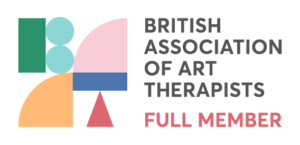In art therapy, it is not so important to get a final aesthetic product as it is to help the inmate reflect on his or herself. This process takes place to help the artistic creation; this also acts as an intermediary facilitator of communication and exploration of feelings. In the last instance, the objective in art therapy is to learn to use one’s own artistic creativity to resolve conflicts that are in a dimension other than the purely aesthetic. Applications of art therapy in prisons: Prison is a paradoxical place, oppressed and denied feelings that wake them up and exacerbate with a lot of force; rage starts quickly like a bonfire, while in the very heart of the fire, hidden, often hides the most heartwarming tenderness.
The work of the art therapist is to help the inmate to reconcile these two forces.
There are many psychological factors that the inmate has to face. The first one is obviously the lack of freedom, but it is also found in a hostile and threatening atmosphere, trapped in an alley in which the need to defend themselves and the threat of punishment coexist at the same time.
The inmate lives far from their relative to see, if one sees them around the clock, in any case each visit represents a new farewell.
The manner in which the inmate lives his/her own crime is also a fact that has to be dealt with and whose resolution largely determines whether the crime will be repeated. A network of contradictory feelings lives inside the prisoner that is much more effective than the walls of the prison.
So that the inmate may reach rehabilitation before leaving with the victim-executioner blame-punishment spiral in which one is trapped, only if he or she manages to achieve this goal of being able to confront what he or she lacks, being aware of the pain of others and taking responsibility for their own actions.
The art therapist accompanies the inmate in the difficult task of putting his or her life in order. Thus, artistic objects that occur in the art therapy session, whether individually or in a group, come as a vital importance to the personal development of the inmate and each image represents a step on the road to discover oneself. A value, but superior, in any other case than the one that is given to the work exhibited in an art gallery.
Articles are protected by copyright laws. We ask that if you use them that they are cited properly.
Author:
Carles Ramos i Portas
Director of Art Therapy at Metàfora
carles.ramos@metafora.org
You might also be interested in reading:








